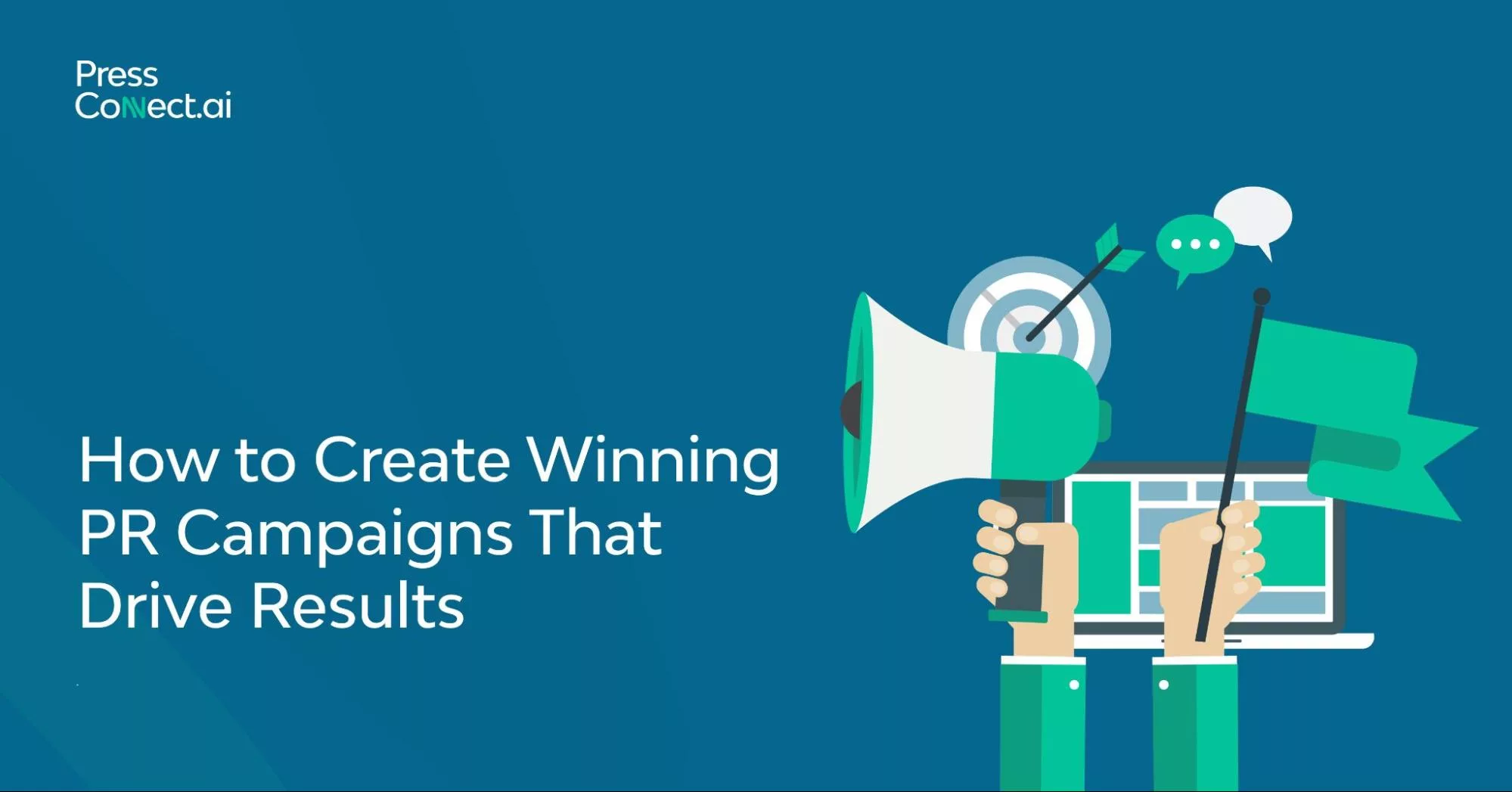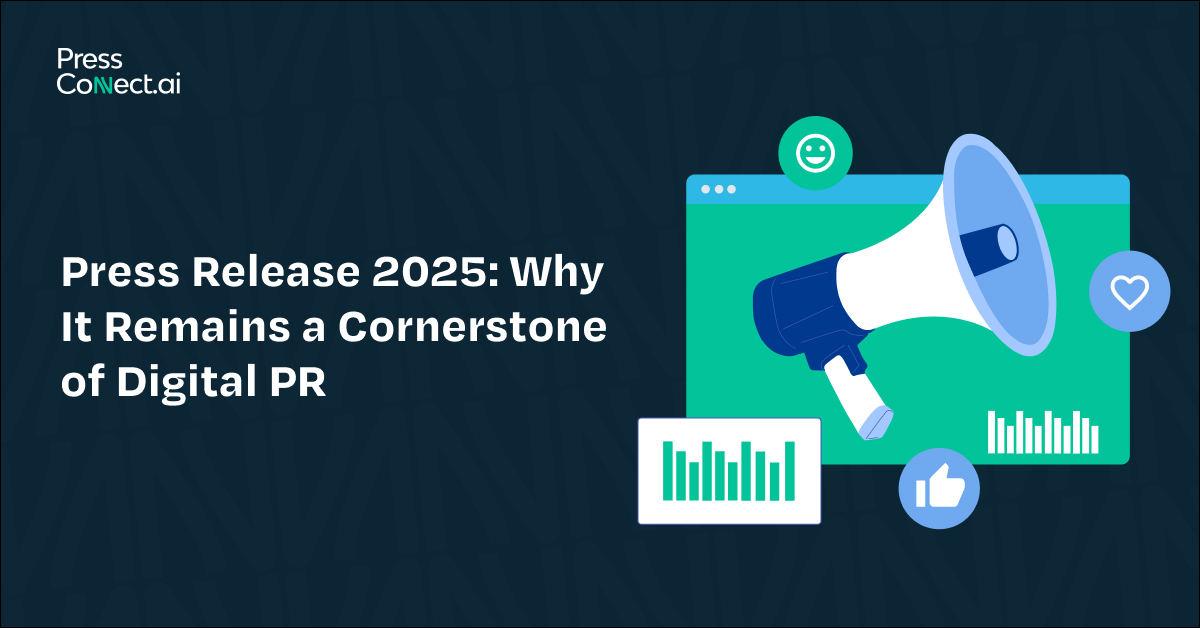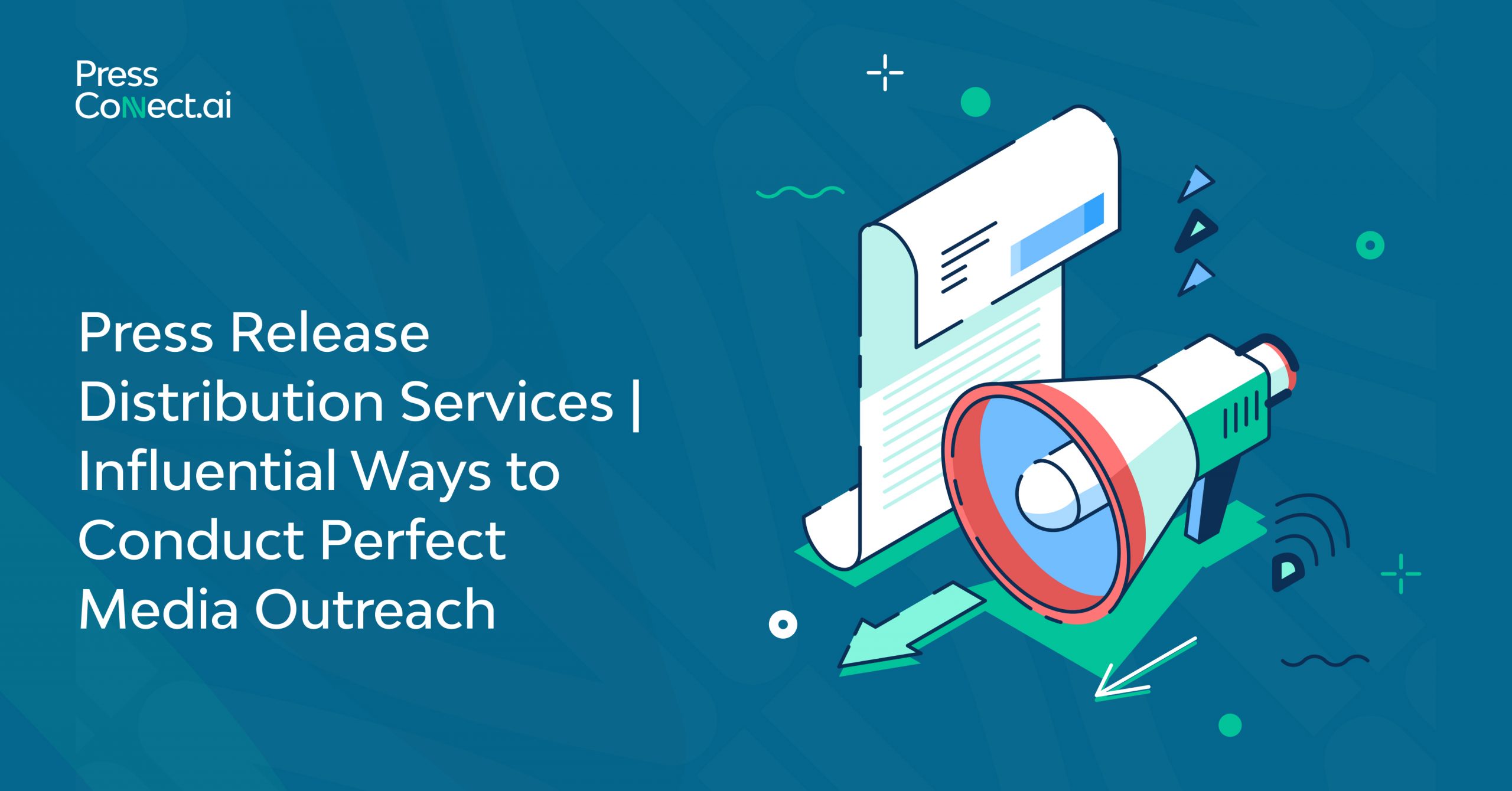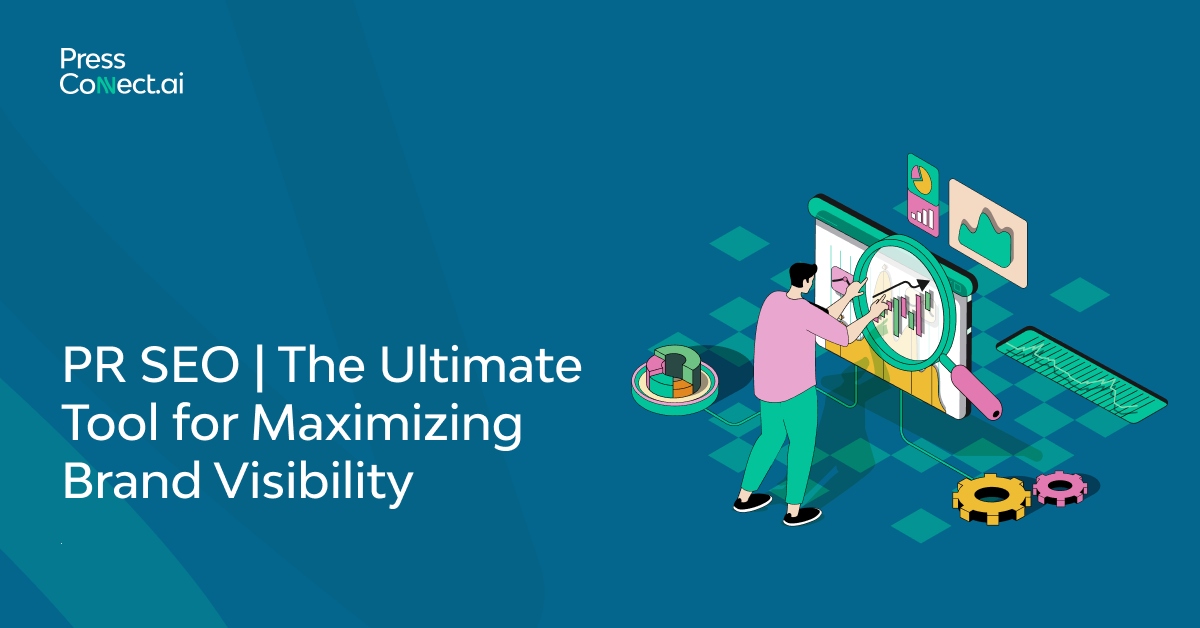How Data Highlights the Essential Role of PR in Business Growth
The world is changing rapidly, and companies must keep up with digitalization. PR in business is the way to move forward, and it is more than just press releases writing or fostering relationships with media outlets.
Now, it is more about getting measurable metrics to extract data-driven insights out of it for future PR campaigns. As data is becoming an integral part of businesses, experts are now utilizing the power of PR integrated with data-driven insights.
This blog will highlight how B2B PR is evolving and why it is necessary for companies.
Adopting Data-Driven PR
Global digital news consumption rose by 33% between 2019 and 2021.PR professionals utilize data outcomes to plan strategies and measure their impact. Using data collection tools and PR results, experts can create more targeted campaigns, analyze performance metrics, and make informed decisions that increase visibility.
- Enhanced Decision Making: With access to data, PR experts can determine what works and what does not. This approach results in more planned and carefully thought decisions.
- Improved Campaigns: Data outcomes allow the creation of entirely personalized and targeted PR campaigns. This ensures that the message relates to the relevant audience.
- Quantifiable Results: Performance KPIs give precise results of the campaign’s success, making it comprehensive enough to justify PR strategies and purposefully designate budgets.
Intuition has no space in the PR anymore because everything is planned according to the data.
Comprehending Data-Driven PR in Business
Data-driven PR uses data insights to plan and optimize press release distribution efforts. Traditional methods and intuition no longer serve the purpose. A lot of companies are leaning towards data to confirm their decisions.
Critical Elements of Data-Driven PR
Multiple critical PR elements build the foundation of data-driven PR in business.
- Data Gathering: Compiling data from various resources, including surveys, social media, website analytics, and media coverage.
- Data Analysis: To discover patterns, insights, and PR trends.
- Campaign Development: Using data analysis results to plan PR campaigns.
- Execution: Implementing the outcomes on multiple channels.
- Assess and Adjust: Regularly measure the efficiency of the PR campaign and make the necessary changes in the next one.
Conventional vs. Data-Driven PR in Business
In 2023, the public relations (PR) worldwide market value amounted to an estimated 19.5 billion U.S. dollars, down from 20 billion dollars a year earlier. Conventionally, PR depended on intuition, a wider audience, and expertise. These methods served their purpose back in the time. Now, time has changed, and so does the PR approach. Moreover, data-driven PR offers flexibility and precision.
On the other hand, data-driven PR utilizes particular data to dive deep into it and get the insights that will be helpful to make any campaign successful. This perspective enhances the chances of targeting the right audience, which results in measurable outcomes that can be analyzed and refined per PR trends. Here are a few distinctive features:
Targeted Audience: Conventional PR usually targets a broad audience, expecting to reach their desired demographics. Data-driven PR utilizes data to detect and focus on the most compatible audience.
Precise Messaging: Conventional PR messages lacked evidence and any research. On the contrary, data-driven PR utilizes the data to analyze the patterns and then write a message to acknowledge their audience’s pain points. This gives PR professionals an edge in constructing a narrative that resonates with their audience.
Gauging Success: Media coverage volume was the primary metric to assess traditional PR. In data-driven PR, businesses lean more towards metrics like sentimental analysis, engagement, and conversion rates.
Why Choose Data-Driven PR in Business?
PR industry trends are changing, and data-driven practices are setting the standard for years to come. By utilizing the data insights, PR strategists can make informed decisions, optimize their campaigns, and exhibit the actual influence of their work.
This method enhances the effectiveness of PR campaigns to ensure that strategies align with the target audience’s advanced requirements and preferences.
Gather and Inspect PR Data
Data-driven PR starts with acquiring data gathering and analysis skills. This significant step can improve your PR efforts from intuition into a thoughtful campaign. Let us explore the necessary tools and practical tips to make data-driven PR impactful.
Efficient Data Collection
Precise data collection is the critical aspect of any successful PR campaign. Even the most talented PR professionals cannot do much without precise data. Here are some tips to make the data collection efficient:
- Set Clear Goals: Identify the business’s goals before starting data collection. If the company is trying to comprehend its audience, analyze the campaign results, or detect any loopholes. Setting clear goals will pave the way for data collection.
- Utilize Several Resources: More than relying solely on a single data resource is required. Analyzing the various sources to get the maximum insights on website traffic, media analytics, social media metrics, and monitoring tools is necessary to increase the impact of PR in business.
- Assure Data Quality: Quality over quantity. Crosscheck the authenticity of the data before initiating analysis on it. Consistently update the databanks to secure the integrity of the information.
Mastering Data Analysis in B2B PR
After collecting the data, the next step is to align the data for analysis. Here is how businesses can transform the raw data into an organized one:
- Utilize Modern PR Tools: Innovative software is designed for data analysis. Tools such as Hootsuite and Google Analytics are in place for a reason. These tools assess metrics such as brand mentions and analyze audience and behavior.
- Segregate the Data: Breakdown the data into segments to make the analysis process more accessible. Examine the user demographics, patterns, and trends that are not immediately obvious.
- Employ Data Visualization: Convert the data into visual forms such as graphs, charts, and infographics. Adding multimedia can help to make the data more accessible and easier to translate.
The Role of Precise Data Collection and Analysis Tools for PR in Business
The efficiency of the data-driven PR depends on the tools the business will utilize. Here is an insight into some necessary PR tools:
- Google Analytics: Tracking user behavior and website traffic is necessary. It assists businesses in understanding which content format relates most to their audience.
- HootSuite: An all-inclusive social media management tool that analyzes various social media channel metrics and tracks engagements.
Applying Data to Inform PR Strategies
Data-driven PR utilizes this understanding to initiate the campaigns that are positioned effectively. Suppose a business is launching a new product or service; conventional PR will depend on the
- Demographics
- Generic media outreach
On the contrary, the modern approach toward PR in business will utilize the
- Targeted audience
- ·Assess social media PR trends
- Comprehend the user behavior
- Analyzing past trends
- Consumer buying behavior
Tracking the Influence of Data-Driven PR
Comprehending the efficiency of the campaigns is essential in the PR industry. Data-driven PR provides a more accurate method to analyze the impact, giving clear metrics and KPIs to gauge access. Let’s explore the essential elements to track the influence of data-driven PR.
Essential PR Metrics and KPIs
To analyze the success of data-driven PR, businesses need to focus on specific analytics. This will help organizations understand what is working for them or is not yielding results. Here are a few essential metrics to cover.
| Metric | Description |
| Media Coverage | Assesses the quality and volume of media mentions. |
| Engagement Rates | Analyzes how the audience is reacting to the content |
| Website Traffic | Utilizes the analytics tools to measure the website traffic after PR distribution. |
| Lead Generation | Calculate the number of leads generated by the PR campaign. |
Tracking and Reporting PR KPIs
- Gathering the data is the first thing. Businesses must track and report on these KPIs to get the maximum benefit from data-driven PR. Here is how organizations can do it:
- Utilize Analytics Tool: Use tools like Google Analytics, media monitoring software, and social media analytics to collect and analyze data.
- Set Clear Objectives: Determine the objectives for each metric beforehand to understand what a successful campaign looks like. Compare current and past campaigns’ performance to check if the goals are being met.
- Initiate Extensive Reports: Gather the data into singular but comprehensive reports. This should consist of insights and findings.
Press Connect: Your Partner in Driving Data-Driven PR Success
In an era where PR and data integration are essential, Press Connect can empower your business to navigate this evolving landscape with precision. By leveraging data insights and analytics, we help you construct targeted, measurable PR campaigns that engage the right audience and deliver impactful results. From strategic planning to in-depth performance tracking, our solutions ensure your brand stays relevant, data-informed, and growth-oriented. With Press Connect, you will have a trusted partner to unlock the full potential of data-driven PR in business, enhancing your business’s visibility and success in today’s competitive market.






